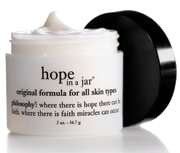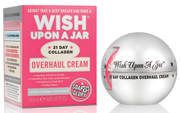Your brand’s register should be authentic rather than desperate to be different, advises Steve Gibbons
At one time designers were only called upon to think about images and type. All of our training had been about the visual assembly of these two elements into something that captures attention and informs.
Of course what the words said had always been important, but more often than not designers had a habit of making it a secondary consideration. Personally I’ve always prided myself on my ability with the written word (you may beg to differ) but it is remarkable how many designers are dyslexic and have little dexterity with it. We’ve been guilty of being too interested in the patterns words make on the page at the expense of what they actually mean.
Today of course every brand needs a ‘tone of voice’. And we now rarely receive a brief where this isn’t highlighted as a specific requirement.
And in the way that the word ‘dyslexia’ is so hard for dyslexics to spell and ‘stutter’ so hard for stutterers to say the phrase ‘tone of voice’ is an entirely inaccurate description of what it is trying to express – ironic don’t you think?
I’m told by a proper copywriter that ‘tone’ is technically wrong and what is meant is ‘register’. Register is the ‘degree of formality and choice of vocabulary, pronunciation and syntax’ (to quote the Oxford Concise Dictionary), which is what we brand people mean when we talk about tone of voice.
‘Voice’ is also wrong in that the word properly relates to the manner in which words are spoken and not to the manner of their selection and assembly on the page (or pack or screen or whatever). For us ‘tone of voice’ generally means the choice and assembly of the written word, not the spoken one. OK maybe in a TV or a radio ad it’s spoken but in every other instance it’s written. Well at least they got ‘of’ right! But for the life of me I can’t find a better way to express it.
And indeed where we once had copywriters we now have ‘tone of voice’ consultants.
‘Brand wheels’ all include ‘tone of voice’ as an important part of brand equity, but in comparison with visual equities it is extraordinarily difficult to provide a guideline for its use.
With visual equities we can define specific colour palettes, iconography, typography etc, but how do you define a choice of words? Choose only from this set of words, but at all costs avoid these and assemble them in this order ensuring you always put these before those? Obviously you can give some guidance on how formal or informal those words should be, and whether we talk in the first person or not, but I defy anyone to define it beyond this point.

Brands loved for their distinct tone of voice include Soap & Glory, Innocent and Philosophy... but brands should not assume they can do an Innocent
That’s not to say that there aren’t some great brands out there that very actively use a distinct tone of voice; from Soap & Glory with its ‘Sexy Mother Plucker’, ‘Wish Upon a Jar’ and ‘Glow Job’, BeneFit with its ‘Finding Mr Bright’ & ‘Stay Don’t Stray’ and Philosophy’s ‘Hope in a Jar’. And of course the often-quoted Innocent smoothie brand which was one of the first to recognise ‘tone of voice’ as a potentially powerful tool for differentiation.
It certainly doesn’t all need to be about punning product names. The simple, direct and straightforward can be equally compelling.
And I’m rather bored with all the brands that now feel they have permission to ‘do an Innocent’. Too many now do this with their conceited down-with-the-kids assumptions.
What these brands will come to understand is that their attitude-loaded  and relaxed we’re-all-mates-together chatty style can come over as presumptuous. Just as with people, brands that are over-familiar can be very off-putting. A brand needs to earn the loyalty that familiarity can engender; it can’t just wade in assuming it. And for us, much as we might like to think of our brands as our consumers’ friends, it takes time to achieve it.
and relaxed we’re-all-mates-together chatty style can come over as presumptuous. Just as with people, brands that are over-familiar can be very off-putting. A brand needs to earn the loyalty that familiarity can engender; it can’t just wade in assuming it. And for us, much as we might like to think of our brands as our consumers’ friends, it takes time to achieve it.
So when Waitrose urges me to be to ‘be bold with a heady mix of Olio Aglio e Peperoncino’ (its ‘Cook’s Ingredients’ range) I feel rather more inclined to action than I do when Vitamin Water (Coca-Cola owned beverage) invites me to ‘spank those naughty little oxidants’. And I start to develop feelings of violence when a Barclays’ ATM machine tells me ‘I love it when you touch my buttons’. All I want from my bank is an acceptable level of competence. I don’t want them to sidle-up all chummy and pretend they’re my best mate, especially as I know they’ll find some way of shafting me at the first opportunity.
Of course brands can successfully have a very distinctive attitude, but for many brands it just isn’t appropriate. What this is really about is having a thorough understanding of what your brand stands for and what kind of relationship your consumers want with it (not the other way around) – and then acting appropriately with an authentic tone of voice.
The starting point shouldn’t be ‘how can we be different’, it should be ‘how can we be authentic’ to our brand. So when I feel like punching the lights out of someone at Barclays it isn’t their tone of voice per se; it’s the disingenuity of it.
So be careful when you take that tone of voice with me.
